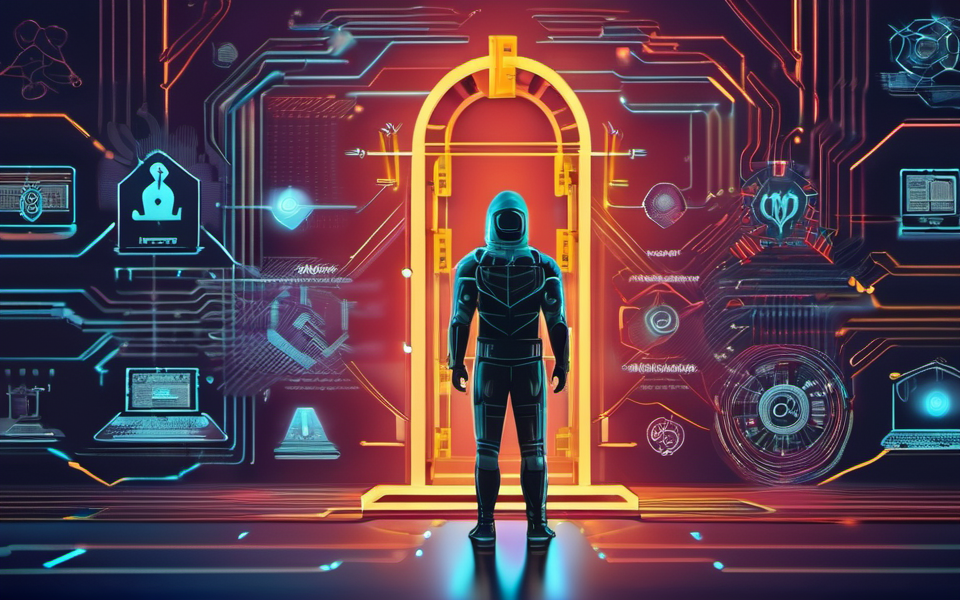You think you’re safe online? Think again! 🤯
The cyber threat landscape is evolving faster than ever before, with sophisticated attackers deploying increasingly advanced cyber attacks to steal sensitive data, disrupt operations, and extort money. From zero-day exploits to malware-driven attacks, the digital world is a battlefield, and the stakes are higher than ever. But what if you could get ahead of the game? What if you could defend your organization with the latest visionary technologies and strategies? This isn’t just about firewalls and antivirus anymore, it’s about embracing a whole new approach to security. Let’s dive in and unlock the secrets to defending against today’s most dangerous attacks.
The Evolution of Cyber Threats
Gone are the days of simple phishing emails and generic malware. Today’s attackers are highly skilled and well-funded, leveraging cutting-edge techniques like artificial intelligence (AI) and machine learning (ML) to bypass traditional security measures.
The Rise of Sophisticated Attacks
Think targeted attacks, where malicious actors zero in on specific individuals or organizations with highly personalized phishing campaigns or zero-day exploits – vulnerabilities that haven’t been patched yet. The sheer volume and complexity of these attacks make them incredibly challenging to detect and respond to.
Zero-day exploit detection
These attacks leverage vulnerabilities that are unknown to security vendors. To defend against them, you need proactive measures like constant vulnerability scanning and rapid patch deployment to stay ahead of the curve.
Targeted attacks
Targeted attacks often leverage social engineering tactics, posing as trusted individuals or organizations to manipulate users into clicking on malicious links or providing sensitive information.
Ransomware
Another dangerous threat is ransomware, which can encrypt data, lock users out of their systems, and demand ransom payments to restore access.
Transformative Security Strategies: Beyond the Firewall
To combat this ever-evolving landscape, it’s time to adopt a proactive, holistic approach to security that transcends traditional perimeter defense.
Proactive Threat Hunting
Forget about waiting for an attack to happen. Proactive threat hunting uses specialized tools and skilled analysts to actively search for malicious activity within your network. By employing AI-powered tools and expert analysis, you can uncover threats before they cause serious damage.
* Threat Hunting Teams*
Dedicated threat hunting teams continuously analyze system logs, network traffic, and other security data. They use a combination of artificial intelligence and expert knowledge to uncover suspicious activity, identifying indicators of compromise before attacks become fully realized.
Behavioral Analysis
Proactive threat hunting can also use behavioral analysis, identifying deviations from normal network activity or user patterns. These deviations could indicate suspicious activity.
Zero Trust Security
Zero Trust security is a foundational shift in thinking. This strategy assumes that no user or device is inherently trusted and implements granular controls to ensure secure access to sensitive information. By adopting a least privilege principle, you limit access to data based on “need to know” permissions.
* Identity and Access Management (IAM)*
At the heart of Zero Trust is strong identity and access management (IAM). By implementing multi-factor authentication and granular permissions for each user and device, you make it much harder for attackers to gain access.
* Data Encryption*
Data encryption is another critical aspect. By encrypting sensitive data, you render it useless even if attackers manage to breach your defenses. This means, even if they gain access to the data, they can’t read it.
AI-Powered Security for a Modern World
The latest technology is a game changer when it comes to securing your organization.
* AI-powered Threat Detection*
AI-powered security tools are revolutionizing the way we defend against cyber threats. They can analyze massive amounts of data, identifying suspicious patterns and anomalies that might be overlooked by human analysts.
* Machine Learning Models*
Machine learning models learn from existing datasets to identify suspicious activities, automatically detect and respond to threats with remarkable speed and accuracy.
* Behavioral Analytics*
AI can help with real-time behavioral analytics, detecting subtle changes in user behavior that indicate potential breaches. For example, an AI model might notice unusual login patterns from a particular user account, triggering an alert to investigate further.
* Security Automation*
By leveraging automation, you can drastically streamline security operations, making them more efficient and effective.
* Automated Patching*
Automated patch management eliminates the need for manual patching processes, ensuring all systems are updated with the latest security updates in a timely manner. This reduces the likelihood of successful zero-day exploits.
* Automated Incident Response*
Automated incident response is another powerful tool. AI and ML models can analyze security events, automatically trigger predefined actions based on the nature of the incident, minimizing the time it takes to respond to threats.
Beyond the Hype: Choosing the Right Solutions
Don’t be fooled by the flashy claims! Choosing the right security solutions requires careful consideration.
* Identify Your Needs*
Before making any decisions, take stock of your organization’s vulnerabilities and identify your specific security needs. This involves evaluating your current security posture and considering the most pressing threats you face.
* Evaluate Vendor Solutions*
Look for security solutions that provide the capabilities needed to defend against the specific threats you identified. Don’t just go for the biggest name; focus on vendors with strong reputations for reliability, innovation, and proactive threat hunting.
* Conduct a Pilot Program*
Before making a major investment, consider implementing a pilot program. This lets you test the effectiveness of a solution in your environment, assess its performance, and ensure it seamlessly integrates with your existing systems.
Key Takeaways:
- Modern cyber attacks are becoming more sophisticated, targeting individuals and organizations with zero-day exploits, targeted attacks, and ransomware.
- Proactive threat hunting, zero trust security, and AI-powered solutions are essential to defend against today’s advanced threats.
- Choose security solutions carefully, aligning them with your organization’s specific needs, and considering vendors with strong reputations for reliability and innovation.
- Embrace the transformative potential of AI and machine learning in your security strategy for a future-proof approach to cyber defense.









